Photo
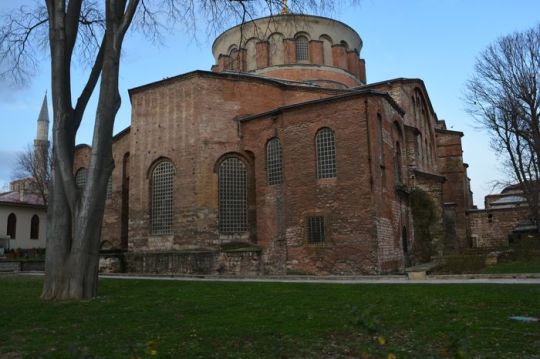
Frenchman's Fate and Government Response
The Frenchman’s identity was widely recognized throughout the region, making an explanation unnecessary. He was initially detained as a prisoner, then tragically killed, likely due to the assumption that he possessed valuables. His companion, whom he sought, had already met the same fate. Subsequently, the French Consul, upon verifying the circumstances, lodged a complaint, and it’s likely that the French Government has already demanded compensation for the victims’ families. This incident underscores the ruthless nature of the Bashi-Bazouks, a crucial aspect of the Perustitza affair.
Escape Attempts and Pursuit
Many individuals, lacking faith in the benevolence of the Turks but hesitant to seek refuge in the church, fled to the fields. However, they were relentlessly pursued by the Bashi-Bazouks and mercilessly killed wherever they were found. After severing ties with these individuals, the attackers turned to pillaging the deserted homes, setting them ablaze afterward. While they fired upon the church from a distance, they refrained from direct assault when met with armed resistance, indicating their reluctance to engage in combat against prepared adversaries Guided Tours Turkey.
Pillage and Terror
Over the course of several days, from Tuesday to Thursday, the Bashi-Bazouks pillaged and burned the villages, occasionally targeting the church from afar. Meanwhile, the helpless villagers remained confined to the churchyard, witnessing the destruction of their homes with a sense of despair. Despite their desire to resist, they were outnumbered, with only around two hundred armed individuals against a force of a thousand Bashi-Bazouks. An Armenian girl, daughter of one of the churchgoers, provided firsthand accounts of the siege, offering insights into the villagers’ plight and the terror inflicted upon them.
0 notes
Photo
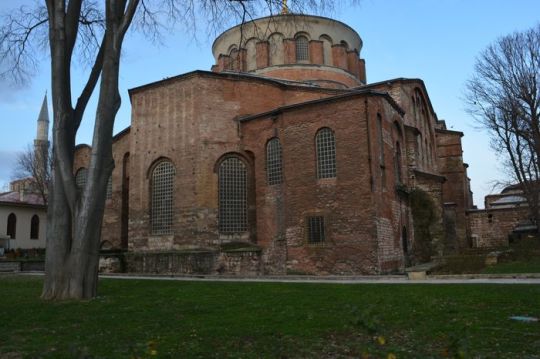
Frenchman's Fate and Government Response
The Frenchman’s identity was widely recognized throughout the region, making an explanation unnecessary. He was initially detained as a prisoner, then tragically killed, likely due to the assumption that he possessed valuables. His companion, whom he sought, had already met the same fate. Subsequently, the French Consul, upon verifying the circumstances, lodged a complaint, and it’s likely that the French Government has already demanded compensation for the victims’ families. This incident underscores the ruthless nature of the Bashi-Bazouks, a crucial aspect of the Perustitza affair.
Escape Attempts and Pursuit
Many individuals, lacking faith in the benevolence of the Turks but hesitant to seek refuge in the church, fled to the fields. However, they were relentlessly pursued by the Bashi-Bazouks and mercilessly killed wherever they were found. After severing ties with these individuals, the attackers turned to pillaging the deserted homes, setting them ablaze afterward. While they fired upon the church from a distance, they refrained from direct assault when met with armed resistance, indicating their reluctance to engage in combat against prepared adversaries Guided Tours Turkey.
Pillage and Terror
Over the course of several days, from Tuesday to Thursday, the Bashi-Bazouks pillaged and burned the villages, occasionally targeting the church from afar. Meanwhile, the helpless villagers remained confined to the churchyard, witnessing the destruction of their homes with a sense of despair. Despite their desire to resist, they were outnumbered, with only around two hundred armed individuals against a force of a thousand Bashi-Bazouks. An Armenian girl, daughter of one of the churchgoers, provided firsthand accounts of the siege, offering insights into the villagers’ plight and the terror inflicted upon them.
0 notes
Photo
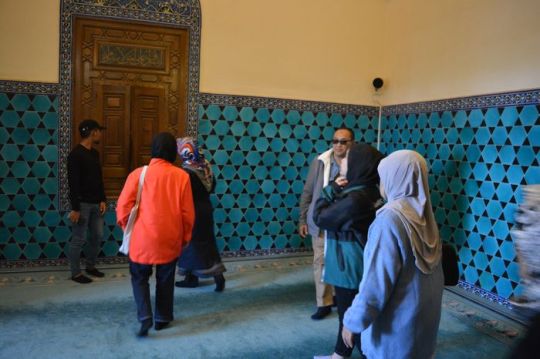
Discovery of the Kasıkcı Diamond
The story of the Kaşıkçı Diamond’s discovery, also known as “the appearance of a most precious diamond,” is a fascinating tale of unexpected fortune. According to historical sources, a circular stone was found in a neglected area in Egrikapi, Istanbul. Unaware of its true worth, the finder exchanged it for a few spoons at a local spoon-seller’s stall. Subsequently, a jeweler purchased the stone for ten gold pieces from the spoon-seller, initially unaware of its value. Upon realizing its authenticity, a dispute arose between the jeweler and his colleague who sought a share of the discovery. Eventually, the matter reached the Chief Jeweler of the Palace, who intervened and purchased the diamond from both parties, rewarding them with purses of gold coins.
Acquisition by the Imperial Treasury
Upon hearing of the remarkable diamond, Grand Vizier Mustafa Pasha expressed interest in acquiring it for himself. However, the Sultan intervened and issued a decree demanding the stone for the Imperial Treasury. After careful examination, the stone was confirmed to be an 84-carat, unparalleled diamond. Consequently, it was acquired for the treasury, symbolizing a significant addition to the imperial wealth. In recognition of his role in securing the diamond, the Chief Jeweler of the Palace was promoted to the prestigious position of ‘Head of the Palace Doorkeepers’ and rewarded with several bags of gold coins Guided Istanbul Tour Whirling Dervishes.
Historical Accounts
Minister of Finance Sari Mehmet Pasha provided further details about the discovery of the Kaşıkçı Diamond in his chronicle “Zübde-i Vekaiyat.” According to his account, the diamond was initially found in the dumps of Egrikapi, Istanbul, and exchanged for spoons by the original finder. As the stone passed through various hands, its true value became evident, leading to disputes among jewelers. Ultimately, the Chief Jeweler of the Palace intervened, ensuring that the diamond was acquired for the treasury while compensating the involved parties with gold coins.
0 notes
Photo

Discovery of the Kasıkcı Diamond
The story of the Kaşıkçı Diamond’s discovery, also known as “the appearance of a most precious diamond,” is a fascinating tale of unexpected fortune. According to historical sources, a circular stone was found in a neglected area in Egrikapi, Istanbul. Unaware of its true worth, the finder exchanged it for a few spoons at a local spoon-seller’s stall. Subsequently, a jeweler purchased the stone for ten gold pieces from the spoon-seller, initially unaware of its value. Upon realizing its authenticity, a dispute arose between the jeweler and his colleague who sought a share of the discovery. Eventually, the matter reached the Chief Jeweler of the Palace, who intervened and purchased the diamond from both parties, rewarding them with purses of gold coins.
Acquisition by the Imperial Treasury
Upon hearing of the remarkable diamond, Grand Vizier Mustafa Pasha expressed interest in acquiring it for himself. However, the Sultan intervened and issued a decree demanding the stone for the Imperial Treasury. After careful examination, the stone was confirmed to be an 84-carat, unparalleled diamond. Consequently, it was acquired for the treasury, symbolizing a significant addition to the imperial wealth. In recognition of his role in securing the diamond, the Chief Jeweler of the Palace was promoted to the prestigious position of ‘Head of the Palace Doorkeepers’ and rewarded with several bags of gold coins Guided Istanbul Tour Whirling Dervishes.
Historical Accounts
Minister of Finance Sari Mehmet Pasha provided further details about the discovery of the Kaşıkçı Diamond in his chronicle “Zübde-i Vekaiyat.” According to his account, the diamond was initially found in the dumps of Egrikapi, Istanbul, and exchanged for spoons by the original finder. As the stone passed through various hands, its true value became evident, leading to disputes among jewelers. Ultimately, the Chief Jeweler of the Palace intervened, ensuring that the diamond was acquired for the treasury while compensating the involved parties with gold coins.
0 notes
Photo

Discovery of the Kasıkcı Diamond
The story of the Kaşıkçı Diamond’s discovery, also known as “the appearance of a most precious diamond,” is a fascinating tale of unexpected fortune. According to historical sources, a circular stone was found in a neglected area in Egrikapi, Istanbul. Unaware of its true worth, the finder exchanged it for a few spoons at a local spoon-seller’s stall. Subsequently, a jeweler purchased the stone for ten gold pieces from the spoon-seller, initially unaware of its value. Upon realizing its authenticity, a dispute arose between the jeweler and his colleague who sought a share of the discovery. Eventually, the matter reached the Chief Jeweler of the Palace, who intervened and purchased the diamond from both parties, rewarding them with purses of gold coins.
Acquisition by the Imperial Treasury
Upon hearing of the remarkable diamond, Grand Vizier Mustafa Pasha expressed interest in acquiring it for himself. However, the Sultan intervened and issued a decree demanding the stone for the Imperial Treasury. After careful examination, the stone was confirmed to be an 84-carat, unparalleled diamond. Consequently, it was acquired for the treasury, symbolizing a significant addition to the imperial wealth. In recognition of his role in securing the diamond, the Chief Jeweler of the Palace was promoted to the prestigious position of ‘Head of the Palace Doorkeepers’ and rewarded with several bags of gold coins Guided Istanbul Tour Whirling Dervishes.
Historical Accounts
Minister of Finance Sari Mehmet Pasha provided further details about the discovery of the Kaşıkçı Diamond in his chronicle “Zübde-i Vekaiyat.” According to his account, the diamond was initially found in the dumps of Egrikapi, Istanbul, and exchanged for spoons by the original finder. As the stone passed through various hands, its true value became evident, leading to disputes among jewelers. Ultimately, the Chief Jeweler of the Palace intervened, ensuring that the diamond was acquired for the treasury while compensating the involved parties with gold coins.
0 notes
Photo

The Plight of Survivors
The current situation of the survivors is dire, with little hope for relief in sight.
Abandoned by Authorities
Turkish authorities have provided scant shelter in the form of wooden sheds on the village outskirts, but the survivors are left to fend for themselves, relying on charity from neighbors for sustenance. Adding insult to injury, these authorities demand regular taxes and war contributions from the victims, displaying callous disregard for their plight.
False Promises
Despite assurances from the Porte in Constantinople, the reality on the ground is grim. Survivors report facing expulsion from their makeshift shelters if they fail to meet these impossible financial demands. The government’s desperate need for funds leaves the survivors in an impossible situation, where the living are forced to pay for the dead Tour Packages Balkan.
Horrific Fate
The sight of skulls and bones scattered on the hill serves as a haunting reminder of the atrocities inflicted upon the villagers, particularly the young girls. Captured and subjected to unspeakable horrors over several days, they were ultimately beheaded in broad daylight, left to rot alongside their massacred kin.
The survivors of the Batak massacre are left to languish in misery, abandoned by the authorities tasked with their protection. As they struggle to survive amidst unimaginable loss and suffering, their plight serves as a stark indictment of the systemic failures and brutal indifference that continue to plague their lives.
0 notes
Photo

The Plight of Survivors
The current situation of the survivors is dire, with little hope for relief in sight.
Abandoned by Authorities
Turkish authorities have provided scant shelter in the form of wooden sheds on the village outskirts, but the survivors are left to fend for themselves, relying on charity from neighbors for sustenance. Adding insult to injury, these authorities demand regular taxes and war contributions from the victims, displaying callous disregard for their plight.
False Promises
Despite assurances from the Porte in Constantinople, the reality on the ground is grim. Survivors report facing expulsion from their makeshift shelters if they fail to meet these impossible financial demands. The government’s desperate need for funds leaves the survivors in an impossible situation, where the living are forced to pay for the dead Tour Packages Balkan.
Horrific Fate
The sight of skulls and bones scattered on the hill serves as a haunting reminder of the atrocities inflicted upon the villagers, particularly the young girls. Captured and subjected to unspeakable horrors over several days, they were ultimately beheaded in broad daylight, left to rot alongside their massacred kin.
The survivors of the Batak massacre are left to languish in misery, abandoned by the authorities tasked with their protection. As they struggle to survive amidst unimaginable loss and suffering, their plight serves as a stark indictment of the systemic failures and brutal indifference that continue to plague their lives.
0 notes
Photo

The Plight of Survivors
The current situation of the survivors is dire, with little hope for relief in sight.
Abandoned by Authorities
Turkish authorities have provided scant shelter in the form of wooden sheds on the village outskirts, but the survivors are left to fend for themselves, relying on charity from neighbors for sustenance. Adding insult to injury, these authorities demand regular taxes and war contributions from the victims, displaying callous disregard for their plight.
False Promises
Despite assurances from the Porte in Constantinople, the reality on the ground is grim. Survivors report facing expulsion from their makeshift shelters if they fail to meet these impossible financial demands. The government’s desperate need for funds leaves the survivors in an impossible situation, where the living are forced to pay for the dead Tour Packages Balkan.
Horrific Fate
The sight of skulls and bones scattered on the hill serves as a haunting reminder of the atrocities inflicted upon the villagers, particularly the young girls. Captured and subjected to unspeakable horrors over several days, they were ultimately beheaded in broad daylight, left to rot alongside their massacred kin.
The survivors of the Batak massacre are left to languish in misery, abandoned by the authorities tasked with their protection. As they struggle to survive amidst unimaginable loss and suffering, their plight serves as a stark indictment of the systemic failures and brutal indifference that continue to plague their lives.
0 notes
Photo

Januarius Aloysius MacGahan A Champion of Truth and Freedom
Early Life and Education
Januarius Aloysius MacGahan, hailed as the most brilliant journalist of the 19th century, was born on June 12, 1844, near New Lexington, Ohio, USA. He was of Irish descent and received his early education in America before pursuing further studies in Europe. MacGahan attended Brussels University, where he studied law.
Journalism Career
MacGahan’s illustrious career as a journalist began during the Franco-Prussian War in 1870 when he served as a correspondent for the “New York Herald.” He fearlessly reported from the battlefields, earning acclaim for his insightful coverage. His baptism by fire as a war correspondent set the tone for his future endeavors.
Courageous Reporting
In 1871, MacGahan found himself amidst the chaos of the Paris Commune, where he was the sole newspaper correspondent present. His firsthand accounts of the Commune’s events showcased his bravery and dedication to his craft. Five years later, in Bulgaria, MacGahan was deeply moved by the resilience of the Bulgarian insurgents during the uprising in Panagurishte. Drawing parallels between their struggle and that of the Paris communards, MacGahan’s reporting illuminated the Bulgarian people’s quest for freedom and independence.
Defiance and Masterful Reporting
Despite facing bans and restrictions, MacGahan continued to defy authorities to report on significant events. In 1873, he ventured into Turkestan, reaching the Russian army despite the tsarist government’s prohibition. His dispatches on Russian military operations in Asia, particularly his accounts of the capitulation of Khiva, were hailed as masterpieces of military journalism Sightseeing Turkey.
Advocacy for Justice
Throughout his career, whether reporting from Cuba, Spain, England, France, or even within the Arctic Circle, MacGahan remained steadfast in upholding the highest ideals of his time. When “The Times” of London rejected his progressive articles in 1876, fearing their impact, MacGahan found solace in the “Daily News,” where he continued to champion causes like the Bulgarian people’s struggle for freedom.
Januarius Aloysius MacGahan’s legacy endures as a testament to the power of journalism in advocating for truth and justice. His fearless reporting and unwavering commitment to the defense of human rights continue to inspire journalists worldwide. Through his groundbreaking work, MacGahan left an indelible mark on the annals of journalism, earning him a place among its most revered figures.
0 notes
Photo

Januarius Aloysius MacGahan A Champion of Truth and Freedom
Early Life and Education
Januarius Aloysius MacGahan, hailed as the most brilliant journalist of the 19th century, was born on June 12, 1844, near New Lexington, Ohio, USA. He was of Irish descent and received his early education in America before pursuing further studies in Europe. MacGahan attended Brussels University, where he studied law.
Journalism Career
MacGahan’s illustrious career as a journalist began during the Franco-Prussian War in 1870 when he served as a correspondent for the “New York Herald.” He fearlessly reported from the battlefields, earning acclaim for his insightful coverage. His baptism by fire as a war correspondent set the tone for his future endeavors.
Courageous Reporting
In 1871, MacGahan found himself amidst the chaos of the Paris Commune, where he was the sole newspaper correspondent present. His firsthand accounts of the Commune’s events showcased his bravery and dedication to his craft. Five years later, in Bulgaria, MacGahan was deeply moved by the resilience of the Bulgarian insurgents during the uprising in Panagurishte. Drawing parallels between their struggle and that of the Paris communards, MacGahan’s reporting illuminated the Bulgarian people’s quest for freedom and independence.
Defiance and Masterful Reporting
Despite facing bans and restrictions, MacGahan continued to defy authorities to report on significant events. In 1873, he ventured into Turkestan, reaching the Russian army despite the tsarist government’s prohibition. His dispatches on Russian military operations in Asia, particularly his accounts of the capitulation of Khiva, were hailed as masterpieces of military journalism Sightseeing Turkey.
Advocacy for Justice
Throughout his career, whether reporting from Cuba, Spain, England, France, or even within the Arctic Circle, MacGahan remained steadfast in upholding the highest ideals of his time. When “The Times” of London rejected his progressive articles in 1876, fearing their impact, MacGahan found solace in the “Daily News,” where he continued to champion causes like the Bulgarian people’s struggle for freedom.
Januarius Aloysius MacGahan’s legacy endures as a testament to the power of journalism in advocating for truth and justice. His fearless reporting and unwavering commitment to the defense of human rights continue to inspire journalists worldwide. Through his groundbreaking work, MacGahan left an indelible mark on the annals of journalism, earning him a place among its most revered figures.
0 notes
Photo
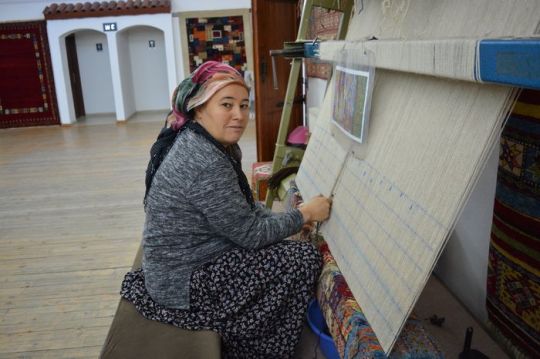
Soviet Interference and Political Developments
General Biryuzov’s Involvement (1945)
General Biryuzov, the Soviet commander, consistently meddled in Bulgarian internal affairs. He insisted on the removal of Dr. G. M. Dimitrov from his role as Secretary General of the Bulgarian Peasant Party. When the request was denied, General Biryuzov ordered the arrest of Dr. Dimitrov. Fifteen years later, in a 1959 article in Rabotnichesko Delo, the Bulgarian Communist Party’s organ, General Biryuzov boasted about his role in Bulgaria’s subjugation and strongly criticized leaders of the Bulgarian Peasant Party, including Dr. G. M. Dimitrov and the late Nicholas Petkov.
Communist Takeover and Lack of Independence (July 1945)
Bulgarian Communist leaders admitted that communism’s establishment in Bulgaria relied on the presence of the Red Army. Under Red Army pressure, the coalition Cabinet formed in September 1944 transformed into a Communist administration by July 1945. This regime was not independent but subservient to the Soviet Union, and it did not represent the free will of the Bulgarian people.
Election Controversy and International Intervention (July-November 1945)
In July 1945, the Soviets announced upcoming elections with only one ticket, the “Fatherland Front” list. Nicholas Petkov, leader of the Peasant Party, requested Allied supervision to ensure free elections following the principles outlined at Yalta. The Bulgarian Communists, without informing Petkov, claimed he had “resigned” as deputy premier. In protest, ministers from the Peasant Party, Social Democrats, and Independent Intellectuals resigned. British and American interventions prompted the Soviets to advise postponing elections and admitting opposition candidates. Petkov was allowed to resume party activities Daily Tours Istanbul.
Broken Agreements and Moscow Conference (November-December 1945)
The Communist-dominated Sofia regime violated agreements by announcing elections on November 18, 1945. Opposition parties boycotted, leading to a single Communist Party-headed candidate list. In December 1945, a Moscow conference of the Three Big Powers addressed Eastern Europe and the Balkans. A compromise solution for Bulgaria was adopted, requiring two opposition party representatives to join the Communist government.
0 notes
Photo
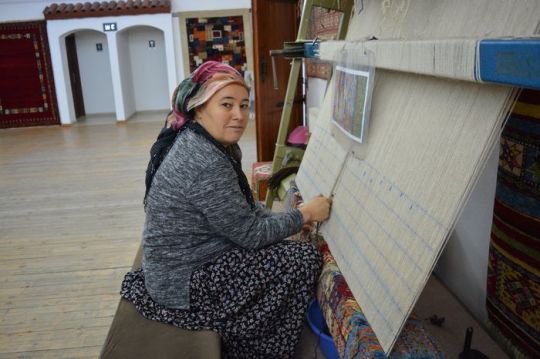
Soviet Interference and Political Developments
General Biryuzov’s Involvement (1945)
General Biryuzov, the Soviet commander, consistently meddled in Bulgarian internal affairs. He insisted on the removal of Dr. G. M. Dimitrov from his role as Secretary General of the Bulgarian Peasant Party. When the request was denied, General Biryuzov ordered the arrest of Dr. Dimitrov. Fifteen years later, in a 1959 article in Rabotnichesko Delo, the Bulgarian Communist Party’s organ, General Biryuzov boasted about his role in Bulgaria’s subjugation and strongly criticized leaders of the Bulgarian Peasant Party, including Dr. G. M. Dimitrov and the late Nicholas Petkov.
Communist Takeover and Lack of Independence (July 1945)
Bulgarian Communist leaders admitted that communism’s establishment in Bulgaria relied on the presence of the Red Army. Under Red Army pressure, the coalition Cabinet formed in September 1944 transformed into a Communist administration by July 1945. This regime was not independent but subservient to the Soviet Union, and it did not represent the free will of the Bulgarian people.
Election Controversy and International Intervention (July-November 1945)
In July 1945, the Soviets announced upcoming elections with only one ticket, the “Fatherland Front” list. Nicholas Petkov, leader of the Peasant Party, requested Allied supervision to ensure free elections following the principles outlined at Yalta. The Bulgarian Communists, without informing Petkov, claimed he had “resigned” as deputy premier. In protest, ministers from the Peasant Party, Social Democrats, and Independent Intellectuals resigned. British and American interventions prompted the Soviets to advise postponing elections and admitting opposition candidates. Petkov was allowed to resume party activities Daily Tours Istanbul.
Broken Agreements and Moscow Conference (November-December 1945)
The Communist-dominated Sofia regime violated agreements by announcing elections on November 18, 1945. Opposition parties boycotted, leading to a single Communist Party-headed candidate list. In December 1945, a Moscow conference of the Three Big Powers addressed Eastern Europe and the Balkans. A compromise solution for Bulgaria was adopted, requiring two opposition party representatives to join the Communist government.
0 notes
Photo

The Coup of September 9 1944
Shifting Allegiances and Negotiations
As World War II unfolded, the legal opposition in Bulgaria pressed for a break with Germany and a shift towards Western states. Negotiations took place in Istanbul, exploring the possibility of aligning with the Allies. By spring 1944, contacts were established with Soviet diplomacy. Simultaneously, the leftist Fatherland Front, organized in 1942, anticipated a significant change as the Soviet army approached Bulgaria. In the summer of 1944, the cabinet of Ivan Bagryanov made a belated attempt to pivot Bulgarian foreign policy towards the United Kingdom and the United States. However, the Soviet army was already on the northern Bulgarian border.
The Soviet Intervention
On September 5, 1944, the Soviet Union declared war on Bulgaria, and Soviet troops crossed the border. With their decisive assistance, the communist-led Fatherland Front orchestrated a military and political action to seize power. On September 6, the Bulgarian government officially declared war on the Reich. In the early hours of September 9, military units, supported by guerrilla fighters, successfully overthrew the Mouraviev government. Prime Minister Kimon Georgiev, appointed by the Fatherland Front, announced the government’s declaration on the radio.
The Aftermath and the End of the Third Bulgarian Kingdom
The authoritarian non-party regime during World War II failed to address significant domestic issues, leading to a crucial turning point for the Third Bulgarian Kingdom. The events of September 9, 1944, marked a profound shift in Bulgaria’s political landscape Turkey Sightseeing.
Reflections on the Era
The closing lines invite future generations to understand the foundational period of this historical shift, emphasizing the unique challenges and experiences of life during those tumultuous years.
The coup of September 9, 1944, brought about a transformative moment in Bulgarian history, reshaping alliances and redirecting the nation’s political trajectory. The events of that day marked the end of an era and set the stage for a new chapter in Bulgaria’s post-war journey.
0 notes
Photo

Unraveling the Telegraphed Numbers
Disraeli’s Telegram and the Numbers Game
This article delves into the discrepancies surrounding Mr. Disraeli’s reading of a telegram from Mr. Baring in Parliament. The focus is on the numbers quoted – the villages burnt and the death toll in Bulgaria. The question arises: were these figures a comprehensive overview or a partial representation limited to the Philippopolis district?
A Partial or Complete Account?
The scrutiny begins with an examination of Mr. Baring’s original telegram. While Mr. Disraeli presented it as a broad assessment covering the entirety of Bulgaria, the article raises doubts about whether Mr. Baring intended it as a complete statement or if it was, in fact, a partial snapshot, concentrating solely on the Philippopolis district.
Philippopolis vs. Northern Bulgaria
The article explores the geographical limitations of Mr. Baring’s firsthand observations, emphasizing his visit to the Philippopolis district. It questions the validity of extrapolating these localized findings to the broader context of northern Bulgaria Bulgaria Private Tours. The concern is whether the telegraphed numbers accurately represent the scale of the atrocities across the entire region.
A Critical Assessment
While acknowledging that discrepancies might not be intentional, the article delves into the unintended consequences of presenting partial information as a comprehensive report. It probes whether Mr. Disraeli’s actions, intentional or not, may have contributed to a skewed understanding of the extent of the atrocities in Bulgaria.
Clarifying the Record
The article emphasizes the importance of precision in reporting, especially when dealing with sensitive and distressing events. It calls for a thorough examination of the telegraphed numbers to ascertain whether they were indeed a holistic representation or if there is a need for clarification and correction to present an accurate historical record.
Unraveling the Televised Tale of Tragedy
In conclusion, the article highlights the need for a nuanced understanding of the telegraphed numbers. It underscores the importance of clarifying whether Mr. Baring’s figures were intended to be all-encompassing or region-specific, shedding light on the potential inadvertent misrepresentation that may have influenced historical narratives surrounding the Bulgarian atrocities.
0 notes
Photo

Unraveling the Telegraphed Numbers
Disraeli’s Telegram and the Numbers Game
This article delves into the discrepancies surrounding Mr. Disraeli’s reading of a telegram from Mr. Baring in Parliament. The focus is on the numbers quoted – the villages burnt and the death toll in Bulgaria. The question arises: were these figures a comprehensive overview or a partial representation limited to the Philippopolis district?
A Partial or Complete Account?
The scrutiny begins with an examination of Mr. Baring’s original telegram. While Mr. Disraeli presented it as a broad assessment covering the entirety of Bulgaria, the article raises doubts about whether Mr. Baring intended it as a complete statement or if it was, in fact, a partial snapshot, concentrating solely on the Philippopolis district.
Philippopolis vs. Northern Bulgaria
The article explores the geographical limitations of Mr. Baring’s firsthand observations, emphasizing his visit to the Philippopolis district. It questions the validity of extrapolating these localized findings to the broader context of northern Bulgaria Bulgaria Private Tours. The concern is whether the telegraphed numbers accurately represent the scale of the atrocities across the entire region.
A Critical Assessment
While acknowledging that discrepancies might not be intentional, the article delves into the unintended consequences of presenting partial information as a comprehensive report. It probes whether Mr. Disraeli’s actions, intentional or not, may have contributed to a skewed understanding of the extent of the atrocities in Bulgaria.
Clarifying the Record
The article emphasizes the importance of precision in reporting, especially when dealing with sensitive and distressing events. It calls for a thorough examination of the telegraphed numbers to ascertain whether they were indeed a holistic representation or if there is a need for clarification and correction to present an accurate historical record.
Unraveling the Televised Tale of Tragedy
In conclusion, the article highlights the need for a nuanced understanding of the telegraphed numbers. It underscores the importance of clarifying whether Mr. Baring’s figures were intended to be all-encompassing or region-specific, shedding light on the potential inadvertent misrepresentation that may have influenced historical narratives surrounding the Bulgarian atrocities.
0 notes
Photo

Unraveling Perustitza's Aftermath
Shadows of a Surrendered Village
The aftermath of Perustitza’s surrender unfolds as a complex tapestry, weaving together conflicting narratives, political maneuvering, and the elusive quest for accurate casualty figures. This pivotal period, marked by surrender and shifting alliances, offers a glimpse into the challenges of documenting the true toll of conflict on a community.
The Paradox of Surrender Perversity Beyond Calculation
The decision to surrender, an act often associated with the hope for safety and mercy, took an unexpected turn in Perustitza. Contrary to the grim expectations that typically accompany such capitulations, the Armenian girl’s account paints a different picture. She asserts that none of the women who surrendered faced maltreatment or violation. This surprising twist challenges preconceived notions about the aftermath of surrender in conflict zones.
The absence of reported atrocities against the surrendered women raises intriguing questions about the motivations and intentions of the occupying forces. This apparent restraint could be a strategic move or indicative of internal divisions within the Turkish leadership. The subsequent recall of Aziz Pacha, deemed too friendly to the Bulgarians, further muddies the waters, hinting at political machinations that went beyond the immediate circumstances in Perustitza.
Calculating Losses The Challenge of Estimating Casualties
The fog of war shrouds the true extent of the tragedy in Perustitza as the challenge of estimating casualties becomes apparent Holidays Bulgaria. The absence of reliable census statistics complicates efforts to ascertain the exact toll on the village. Villages, wary of tax implications, often understate population figures, making it nearly impossible to rely on pre-massacre records.
The village’s official returns indicated three hundred and fifty houses, a figure that, even at a conservative estimate of six inhabitants per house, would suggest a population exceeding two thousand. However, the discrepancy between official records and the villagers’ estimates reveals the uncertainty surrounding the true numbers. The inhabitants’ rough estimate places those remaining at one thousand, implying a devastating loss of life ranging between one thousand and fifteen hundred.
Mr. Baring and Mr. Schuyler align with this estimate, placing the toll at a thousand. Yet, the difficulty of obtaining precise figures highlights the chaos and confusion that often accompany such tragic events. The very nature of war, with its fluid dynamics and the propensity for misinformation, adds layers of complexity to the quest for an accurate account of the casualties in Perustitza.
In the aftermath of Perustitza’s surrender, the village stands as a poignant symbol of the challenges inherent in documenting the human cost of conflict. The elusive nature of casualty figures underscores the need for careful examination and nuanced interpretation, recognizing the multifaceted realities that emerge when perversity, political intrigue, and the toll of war converge on the battlegrounds of history.
0 notes
Photo

Bashi-Bazouks
They had offered no resistance at all to the Bashi-Bazouks, but simply ran away when they heard the Turks were coming. Having received timely notice, they had nearly all escaped, and only twenty-two men had been killed in all. The women and children had all been saved. Of the twenty- two killed, eight had been arrested after the inhabitants returned to the village, and were brutally slaughtered in cold blood while being taken to Philippopolis to prison.
We had heard that eight bodies were found one day on the road near Philippopolis long after the affair was over, and had been told by the Turks that these were bodies of people killed during the insurrection, which had been transported there by some unknown means. When the people returned to their smoking homes, they found themselves completely ruined Daily Tours Istanbul.
Turks refuse to restore
There was not a stick of furni-ture nor a cooking utensil left, and all their cattle, sheep, and horses had been driven off. Their harvests were still standing in the fields, and they are unable to gather and save them without their cattle, which the Turks refuse to restore. Each family had on an average two pairs of oxen, making about 320 pairs in the whole village. Of these only thirty-three pairs were returned, which are utterly inadequate for gathering and saving the harvest.
They besides will have to rebuild their houses, and for this purpose it will be necessary to draw wood a long distance from the mountains, and it will be impossible for them to do this before winter. Unless the poor people can get back their cattle, gather their harvests, and rebuild their houses, they will be in a state of destitution by next winter fearful to think of.
The Turkish authorities have informed Mr. Schuyler everywhere that the cattle were being restored to the burnt villages, and that help would be given the people to rebuild their houses, and everywhere the people tell him that the cattle are not restored, and that no help of any kind is given them.
0 notes